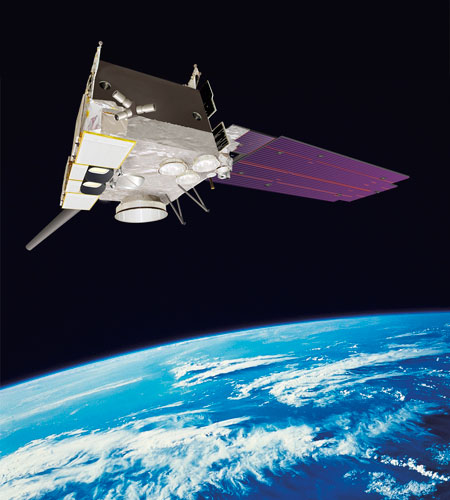WEATHER SATELLITE
Luke12:54-56
And he said also to the people, When ye see a cloud rise out of the west, straightway ye say, There cometh a shower; and so it is And when ye see the south wind blow, ye say, There will be heat; and it cometh to pass.Ye hypocrites, ye can discern the face of the sky and of the earth; but how is it that ye do not discern this time?
The weather satellite is a type of satellite that is primarily used to monitor the weather and climate of the Earth. Satellites can be polar orbiting, covering the entire Earth asynchronously, or geostationary, hovering over the same spot on the equator.
Meteorological satellites see more than clouds and cloud systems. City lights, fires, effects of pollution, auroras, sand and dust storms, snow cover, ice mapping, boundaries of ocean currents,
energy flows, etc., and other types of environmental information are
collected using weather satellites. Weather satellite images helped in
monitoring the volcanic ash cloud from Mount St. Helens and activity from other volcanoes such as Mount Etna. Smoke from fires in the western United States such as Colorado and Utah have also been monitored.
Other environmental satellites
can detect changes in the Earth's vegetation, sea state, ocean color,
and ice fields. For example, the 2002 oil spill off the northwest coast
of Spain was watched carefully by the European ENVISAT, which, though
not a weather satellite, flies an instrument (ASAR) which can see
changes in the sea surface.
El Niño
and its effects on weather are monitored daily from satellite images.
The Antarctic ozone hole is mapped from weather satellite data.
Collectively, weather satellites flown by the U.S., Europe, India,
China, Russia, and Japan provide nearly continuous observations for a
global weather watch.



Comments
Post a Comment